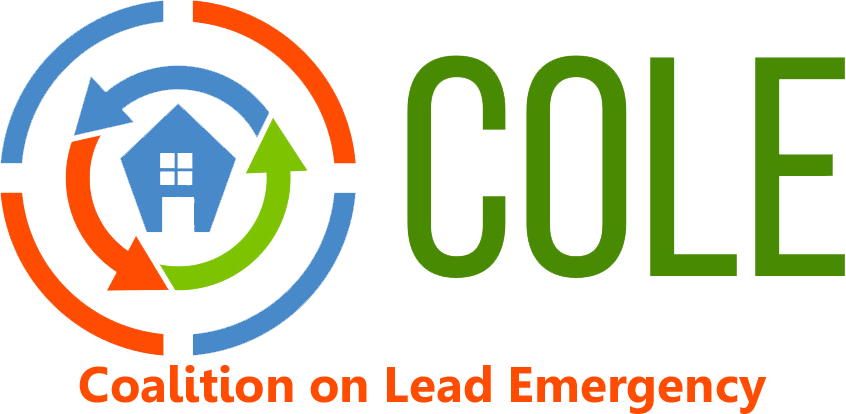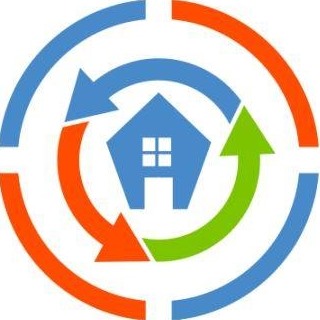Posted April 26, 2021
COLE’S ASKS FOR THE WISCONSIN BIENNIAL BUDGET 2021-2023
EXECUTIVE SUMMARY of Requests from COLE (Coalition on Lead Emergency)
Whereas, lead poisoning at or above 5 micrograms of lead per deciliter (5μg/dL) of blood can cause permanent cognitive damage, behavioral problems, higher school suspension rates, health issues, and increased incarceration for violent crimes;
Whereas, lead poisoning in children costs WI taxpayers $7 billion in costs for medical treatments, special education, and crime and juvenile delinquency;
Whereas, lead exposure to children ages 1-6 is mainly due to interior and exterior dust from deteriorating lead-based paint (in homes built before 1978 or earlier), while lead exposure to children under age 1 can have especially high contributions from lead pipes (“service lines”) and other lead-containing plumbing that carries drinking water; and
Whereas, lead-poisoned children are found in every Wisconsin county
Therefore, the Coalition on Lead Emergency (COLE) requests the following items be included in the Wisconsin Biennial Budget for 2021–2023:
1) $20.3 million over the biennium for LOCAL HEALTH DEPARTMENTS – to increase current interventions for children and families:
- $9.5 million to increase testing Wisconsin children at risk for lead poisoning;
- $900,000 additional to educate parents about lead hazards and lead poisoning prevention;
- $9.9 million increase over the biennium to expand services in the Birth to 3 Program to support education and development of children affected by lead poisoning.
2) $23.8 million over the biennium to REDUCE LEAD POISONING BY PAINT – and add $20 million in federal matching funds:
- $11.8 million additional funding for local health departments to conduct lead hazard investigations and issue lead abatement orders for homes endangering children;
- At least $8 million as a state revenue match to leverage an additional $20 million in federal dollars (CHIP) for the Lead-Safe Homes program, to fund remediation of deteriorating lead-based paint hazards and increase associated workforce development;
- $4 million plus 1 position in ongoing funding for the Windows Plus Program, to fund remediation of friction surfaces that grind lead paint into dust (like windows).
3) At least $40 million over the biennium to REPLACE LEAD SERVICE LINES – to reduce the risk to children and especially to formula-fed newborns and infants.
CALL TO ACTION! (before October 27)
Posted 10/20/2020
$3.55 Million Needed to Assess Lead-Poisoned Children’s Homes
Please contact your alderperson and Mayor Barrett by October 27 – before the Common Council votes on the budget! Ask that $3.55 million be allocated to the Milwaukee Health Department to assess the homes of ALL children found to be lead poisoned in 2021. Currently a relatively high threshold of poisoning (20 mcg/dl) is required to trigger home assessment, but this misses about 1700 poisoned children every year. Please see COLE’s press release below.
Contact Mayor Barrett: [email protected], 414-286-2200
Find your Alderperson here or simply click on the picture of your Alderperson on the Common Council site and you will see their contact information.
Contacts: Richard Diaz, Chair, COLE, [email protected], 414-687-2030; Dennis Jacobsen, Chair, COLE Organizing Committee, [email protected], 414-395-6420
Milwaukee – COLE issues a correction to its October 1 press release regarding its 2021 Milwaukee Budget request. COLE now urges the Milwaukee Common Council and Mayor Barrett to increase the 2021 Milwaukee Health Department (MHD) budget by $3.55 million to provide funding for the MHD to conduct lead inspections and issue consequent abatement orders in the homes of Milwaukee children who are lead-poisoned at or above the threshold of 5 mcg/dl. The amount of $1.6 million stated earlier by the MHD was found by the MHD to be in error. That level ($1.6 million) would still leave about 1300 children poisoned in 2021 without the level of safety provided by a home assessment.
Currently, MHD resources are so limited that lead inspections are conducted only in the homes of children determined to be lead-poisoned at or above a relatively high threshold – 20 micrograms of lead per deciliter of blood (20 mcg/dl). This is only about 6% of those found to be poisoned.
However, 5 micrograms of lead per deciliter of blood (5 mcg/dl) is the level that defines a lead-poisoned child according to WI Statute 254.11(9) and CDC recommendations.
In 2019, only 115 cases in Milwaukee reached the high threshold of 20 mcg/dl. Consequently, the MHD inspected homes lived in and frequented by 140 children (some qualifying under other criteria) and abated155 homes. Screenshots of data provided by the MHD show that this high threshold meant that the homes of ~1745 children identified as lead-poisoned in 2019 were not inspected for sources of lead. (See MHD data below.)
*Venous highest blood lead test per child under 6 years (headings added by COLE for clarification)
| mcg/dl test results | # of individuals |
| 5-.9.9 | 1368* |
| 10-14.9 | 271* |
| 15-19.9 | 101* |
| 20-39.9 | 101* |
| 40 or Greater | 14* |
Highlighted in yellow are those children in 2019 whose elevated blood lead levels triggered attempts to assess their residences. Providing the resources needed to assess the homes of children poisoned at the level of 5 mcg/dl is a critical first step in triggering abatement, greater parental awareness, case monitoring, and inhibiting the continued poisoning of children within such households.
Therefore, COLE is requesting $3.55 million be allocated for the MHD budget to make such assessments possible.
Based on the 2019 data, a 5 mcg/dl threshold will trigger aggressive follow-up for 16 times the current number of lead-poisoned children. Therefore, in 10 years this program will have responded to ~17,450 poisoned children otherwise not included in lead inspection and lead abatement efforts. This program will also have removed a critical barrier – assessment needed to trigger abatement – to greatly increase the coterie of lead-abated properties in Milwaukee.
Recent research by Dr. Emily Lynch and her UWM colleague Dr. Helen Meier determined that being poor, non-white and a renter increases one’s likelihood of being lead poisoned. In recognition of the long-lasting stamp of racism on Milwaukee housing, COLE feels it is crucial that the Common Council and Mayor Barrett act now to remove lead hazards by enabling assessments at the lower threshold. COLE Chair Richard Diaz says, “While ‘the arc of the moral universe is long,’ it is up to us to make it ‘bend toward justice.’”
####
The Coalition on Lead Emergency, COLE, wants all residents of Milwaukee, Wisconsin, to live in an environment where each known source of lead exposure is eliminated. Therefore, COLE is dedicated to creating a sustainable lead safe environment in Milwaukee by engaging a broad range of community partners. It is a collective of nonprofits, environmentalists, educators, doctors, community members and civic activists with three foci: education, workforce development and organizing.
Click here to find and contact your Common Council Member’s Contact Information.
Let them know you want them to support COLE’s $3.55 Million Plan to asses lead-poisoned children’s homes.

